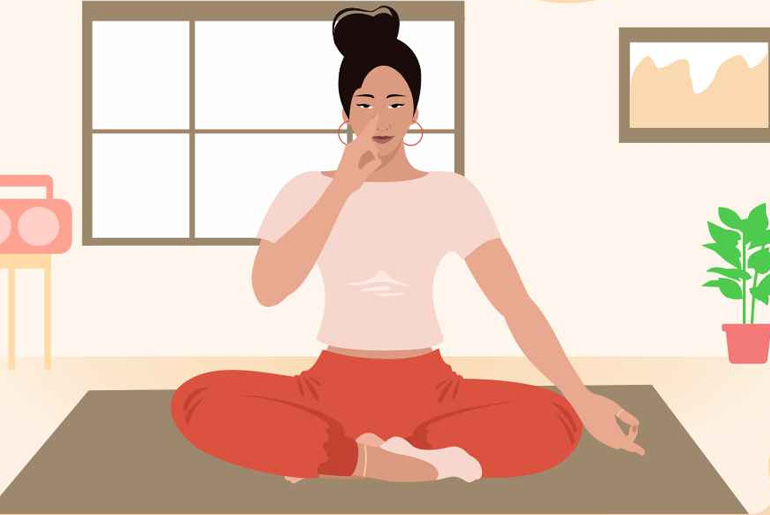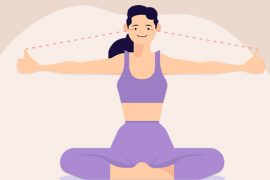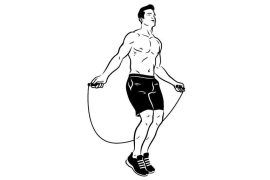Embracing the power of breathwork during the winter season can not only refresh you but also help combat the chill in the air. A yoga trainer recently shared a warming Pranayama technique on Instagram that she believes can chase away winter blues. Known as Surya Bhedana, this right nostril breathing technique is designed to generate bodily heat and alleviate stiffness caused by low temperatures in winter.
Surya Bhedana involves breathing in through the right nostril and exhaling through the left nostril. According to Parwani, this “magical Pranayama” not only generates internal heat but also helps clear sinuses and alleviate coughing. Additionally, the technique is said to increase the oxygen level in the body, offering instant relief to individuals dealing with cold hands and feet during the winter months.
As the temperatures drop, incorporating such warming Pranayama techniques into your routine can be a holistic approach to maintaining physical and respiratory well-being. The emphasis on breathwork serves as a reminder of the therapeutic benefits that simple practices can bring, making it a valuable addition to winter self-care routines. So, this winter, consider embracing the power of breathwork to keep yourself not only refreshed but also comfortably warm.
Can This Breathing Technique Truly Drive Away Winter Chills?
Surya Bhedana is a yogic pranayama technique deeply rooted in ancient traditions, often referred to as the practice of “sun piercing” or “right nostril breathing.” In this method, the breath is manipulated through the right nostril during inhalation and the left nostril during exhalation. The rationale behind Surya Bhedana lies in the intricate connection between the breath and the autonomic nervous system, specifically the sympathetic and parasympathetic branches. The technique is believed to activate the sympathetic nervous system, associated with alertness and activity, during inhalation through the right nostril.
In cold environments, the body instinctively works to preserve its core temperature. Practices such as Surya Bhedana, which engage the sympathetic nervous system, may contribute to an increase in metabolic activity and heat production. By activating the sympathetic branch, this yogic pranayama technique could stimulate the body’s internal processes, generating warmth. The internal warmth generated through practices like Surya Bhedana can be particularly advantageous in cold weather, as it aids in offsetting the potential impacts of exposure to low temperatures.
Do practice correctly:
To practice Surya Bhedana correctly, practitioners start by assuming a comfortable seated position with a straight spine and relaxed shoulders. The right hand is utilized to manipulate the breath flow, either by using the thumb to close the left nostril or by employing a specific hand mudra. The practice involves a cyclical pattern where the right nostril is opened for inhalation, and the left nostril is opened for exhalation. This rhythmic breathing fosters a harmonious balance of energy within the body. It is crucial to approach the practice mindfully, focusing on the breath, and gradually increasing the duration over time. Beginners or individuals with health concerns are advised to seek guidance from a qualified yoga instructor or healthcare professional before incorporating this pranayama technique into their routine.
- The practice of Surya Bhedana is often recommended to be performed in the morning. This timing aligns with the symbolism of the sun and its association with awakening and activity.
- Surya Bhedana are rooted in yogic philosophy, scientific research on the direct impact of specific pranayama practices on body temperature is limited. Individual responses to these practices can vary, and any perceived benefits of increased warmth should be understood within the broader context of holistic well-being. As with any yoga practice, including pranayama techniques like Surya Bhedana, individuals should approach them mindfully and be aware of their physical condition. If someone is sensitive to temperature extremes or has specific health concerns, it is advisable to consult with a healthcare professional or an experienced yoga instructor before incorporating these practices into their routine.
Disclaimer:
The information contained in this article is for educational and informational purposes only and is not intended as a health advice. We would ask you to consult a qualified professional or medical expert to gain additional knowledge before you choose to consume any product or perform any exercise.







